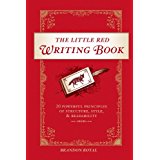Case Study Business Blogging

“To explore uncertainty reduction theory, I ask students to analyze a case study in groups of four to six people for about 15 to 20 minutes,” says Elizabeth Natalle in Teaching Interpersonal Communication. The case study, she adds, is a good teaching technique because students can participate actively and demonstrates choice making.
Stories of all kinds – customer testimonials, famous incidents from the news, Hollywood doings, folklore – you name it – help personalize a business blog. Even if a professional writer is composing the content, true-story material increases engagement by readers with the business or practice. Case studies are particularly effective in creating interest, because they are relatable and “real”.
I think that’s why, back in Journalism 101 class, we were taught to “put a face on the issue” by beginning the article with a human example A story about rising food prices, for example, might begin with “Susie Hellenbecker’s putting things back on the shelf. With the price of cereal and fruit so high, she’s decided there’s no longer room in the budget for those, or for her favorite salad dressing.”
A case study takes that personalization even further, chronicling a customer or client who had a problem or need, and taking readers through the various stages of using the product or service to solve that problem. What were some of the issues that arose along the way? What new insights were gained through that experience, on the part of both the business and the customer?
“Case studies are a great way to tell the world how valuable your products or services are. They go beyond simple testimonials by showing real-life examples of how you were able to satisfy your customer’s needs and help them accomplish their goals,” kissmetrics.com teaches. “With great case studies, you will be able to highlight your successes in a way that will make your ideal potential customer become your customer.”





Follow us online!